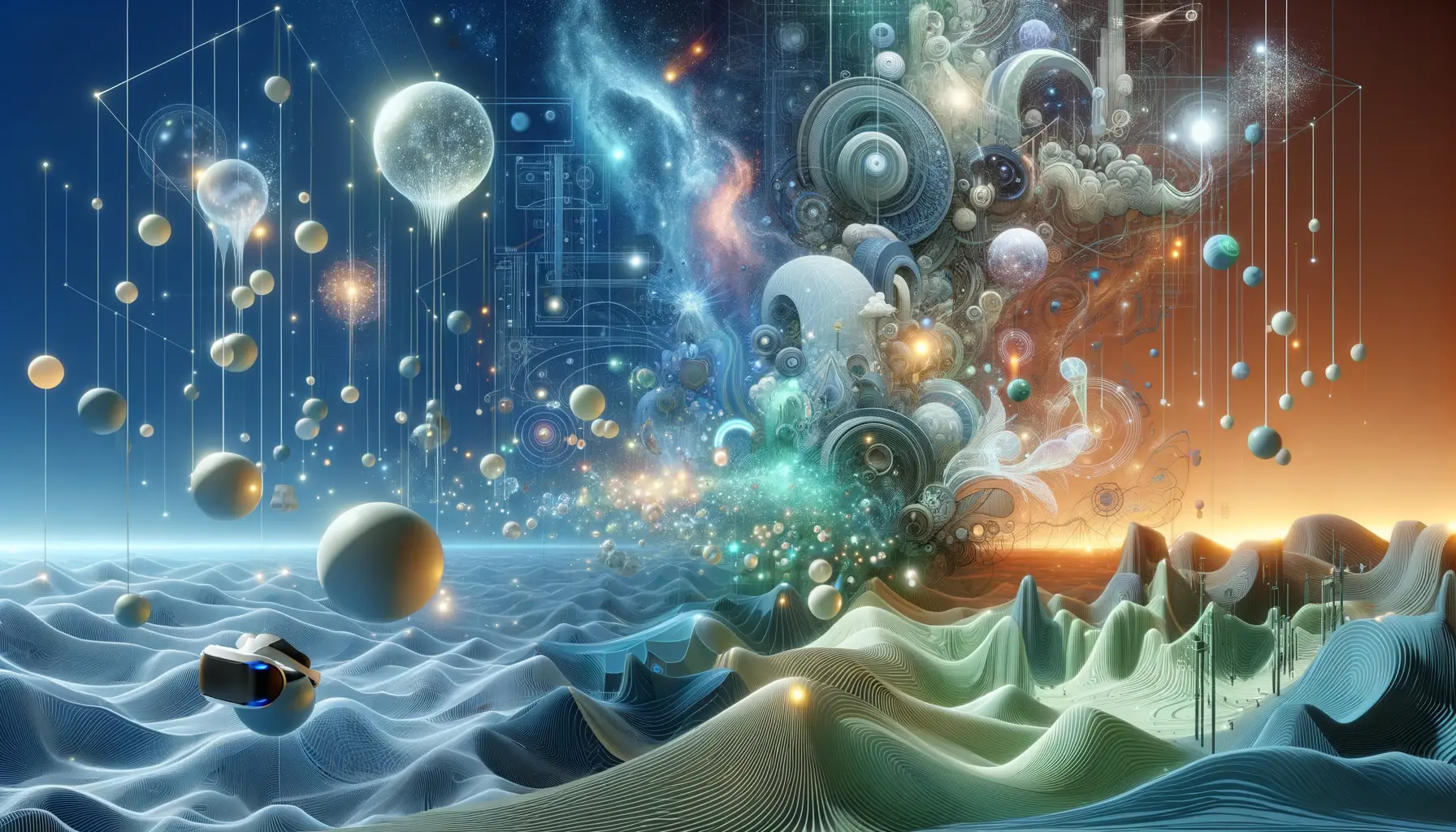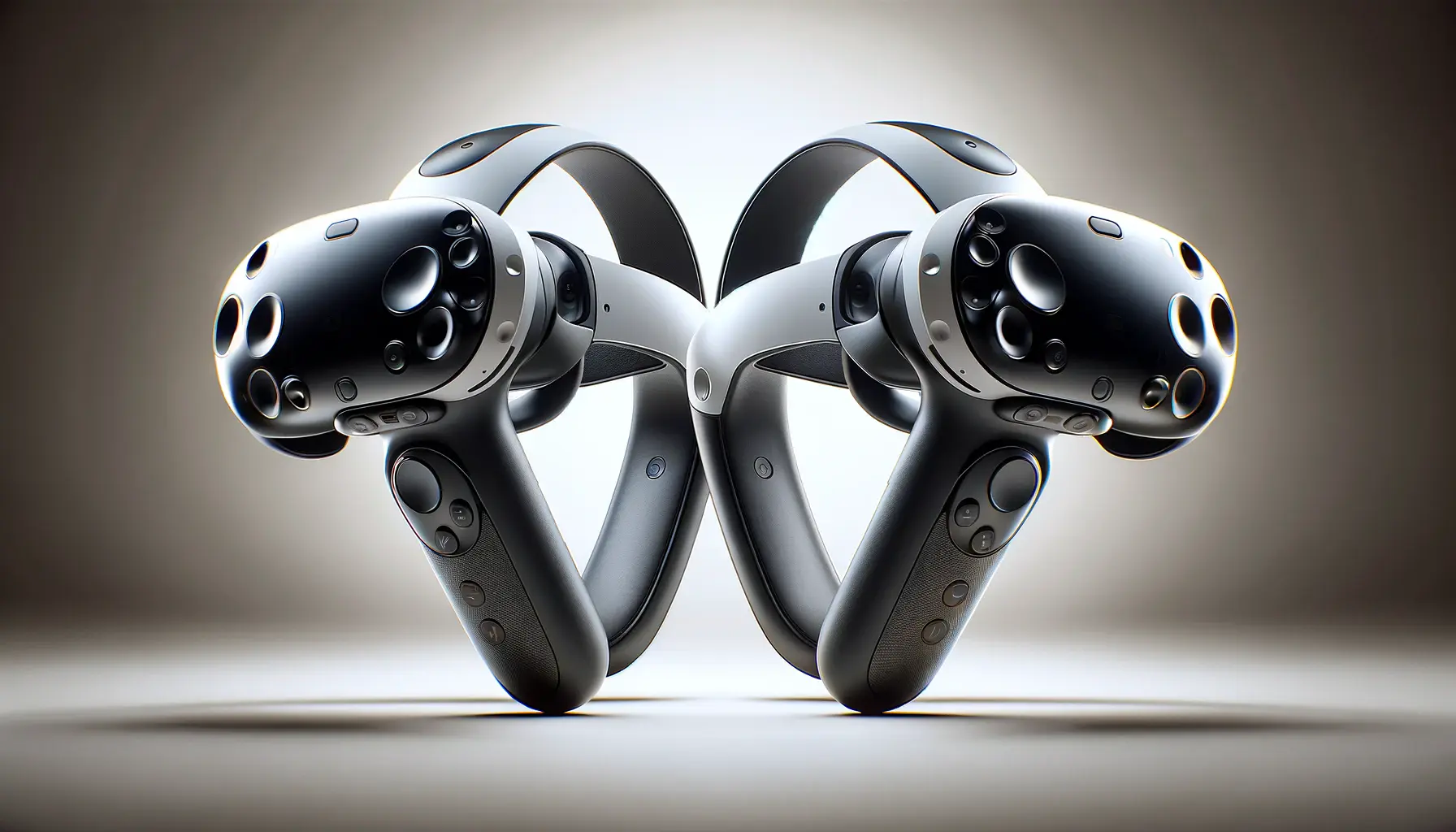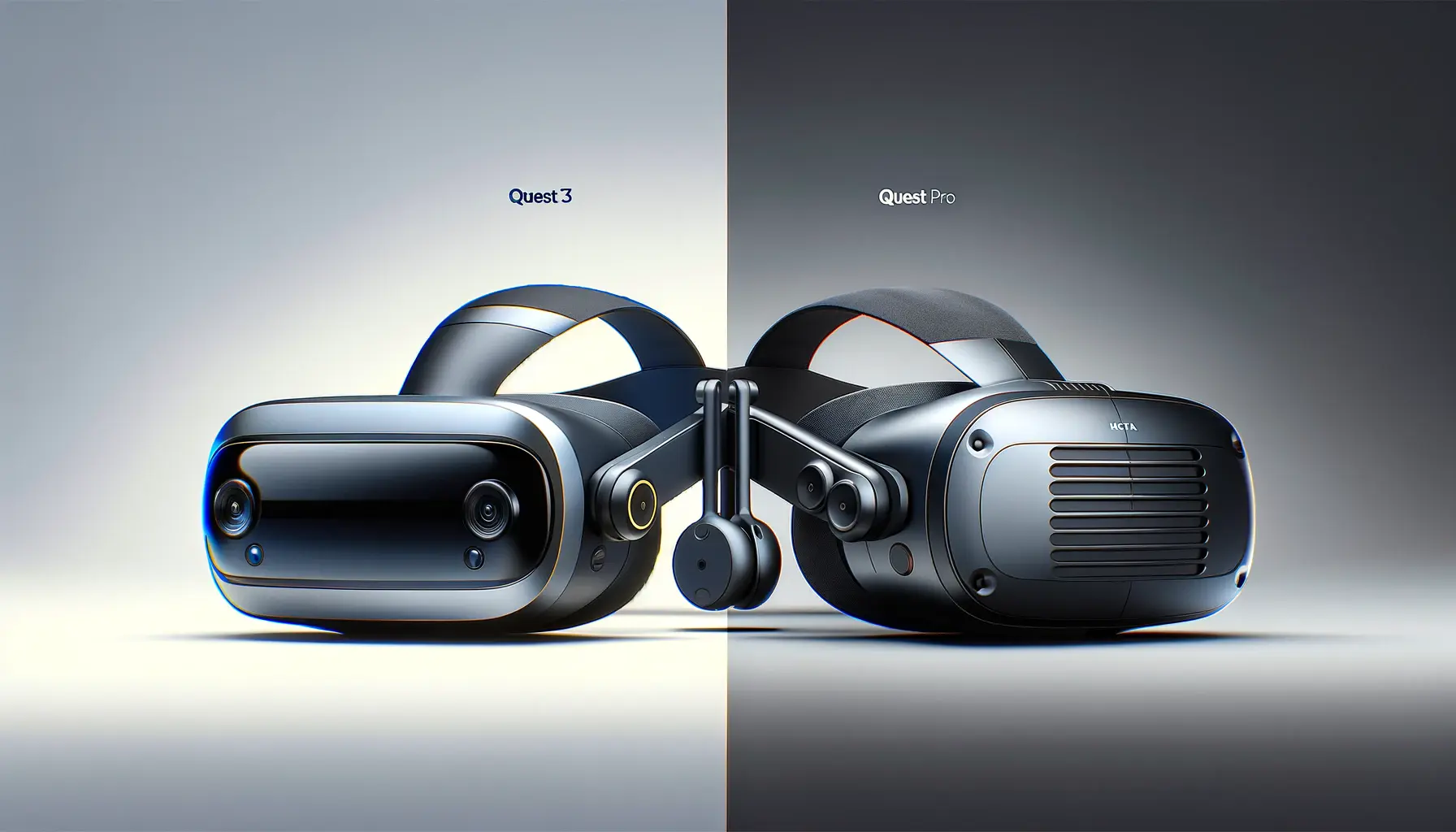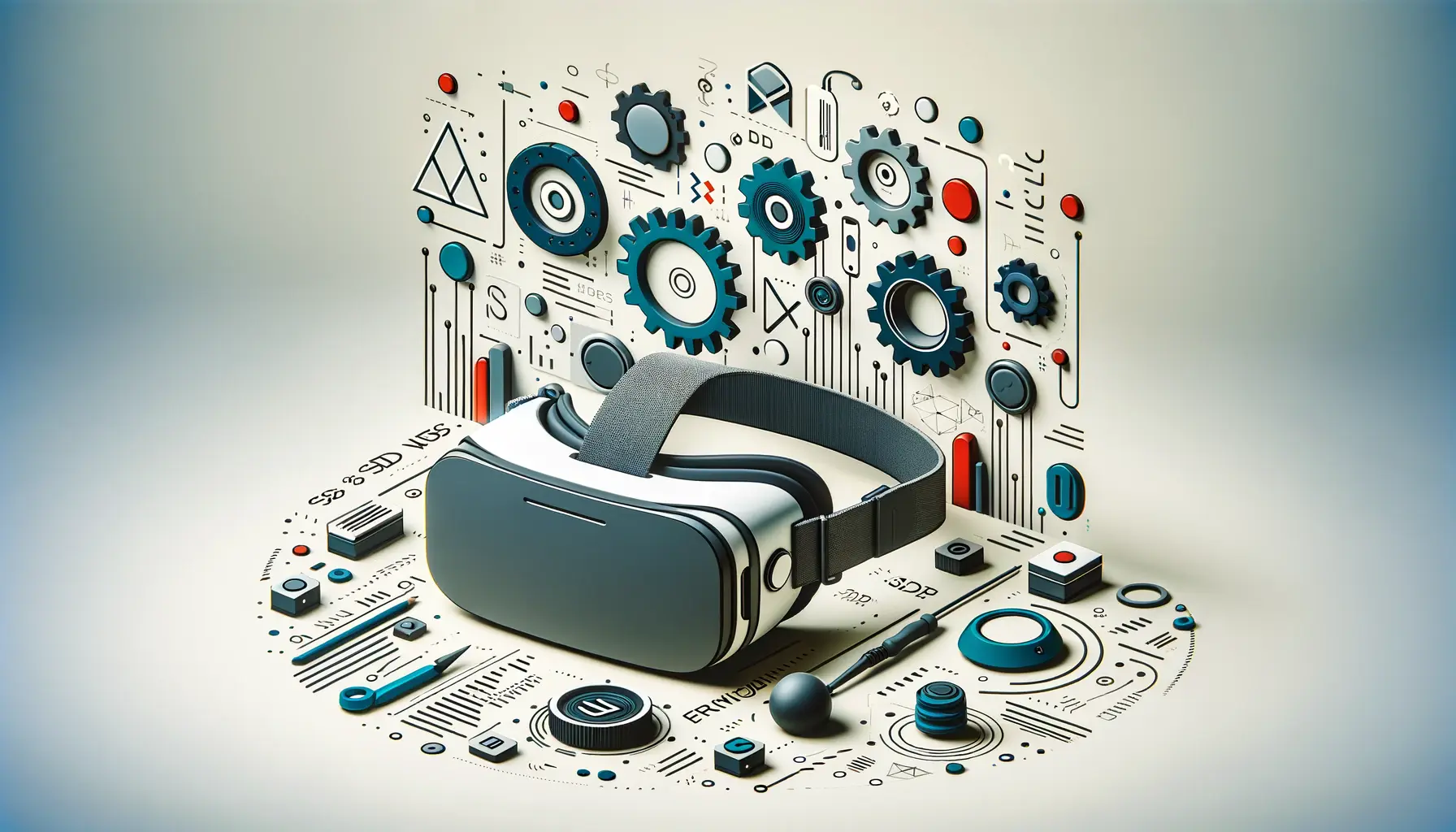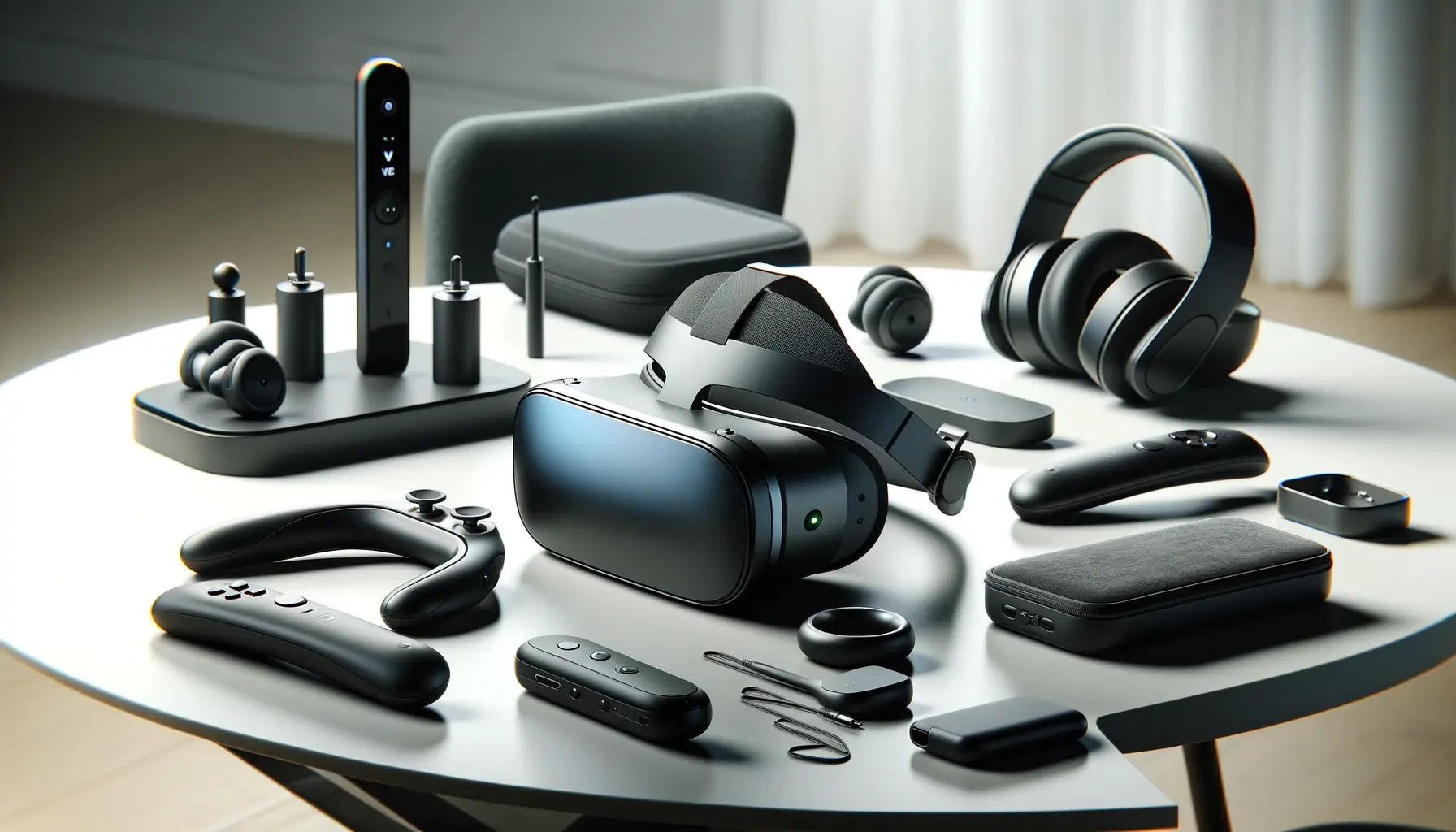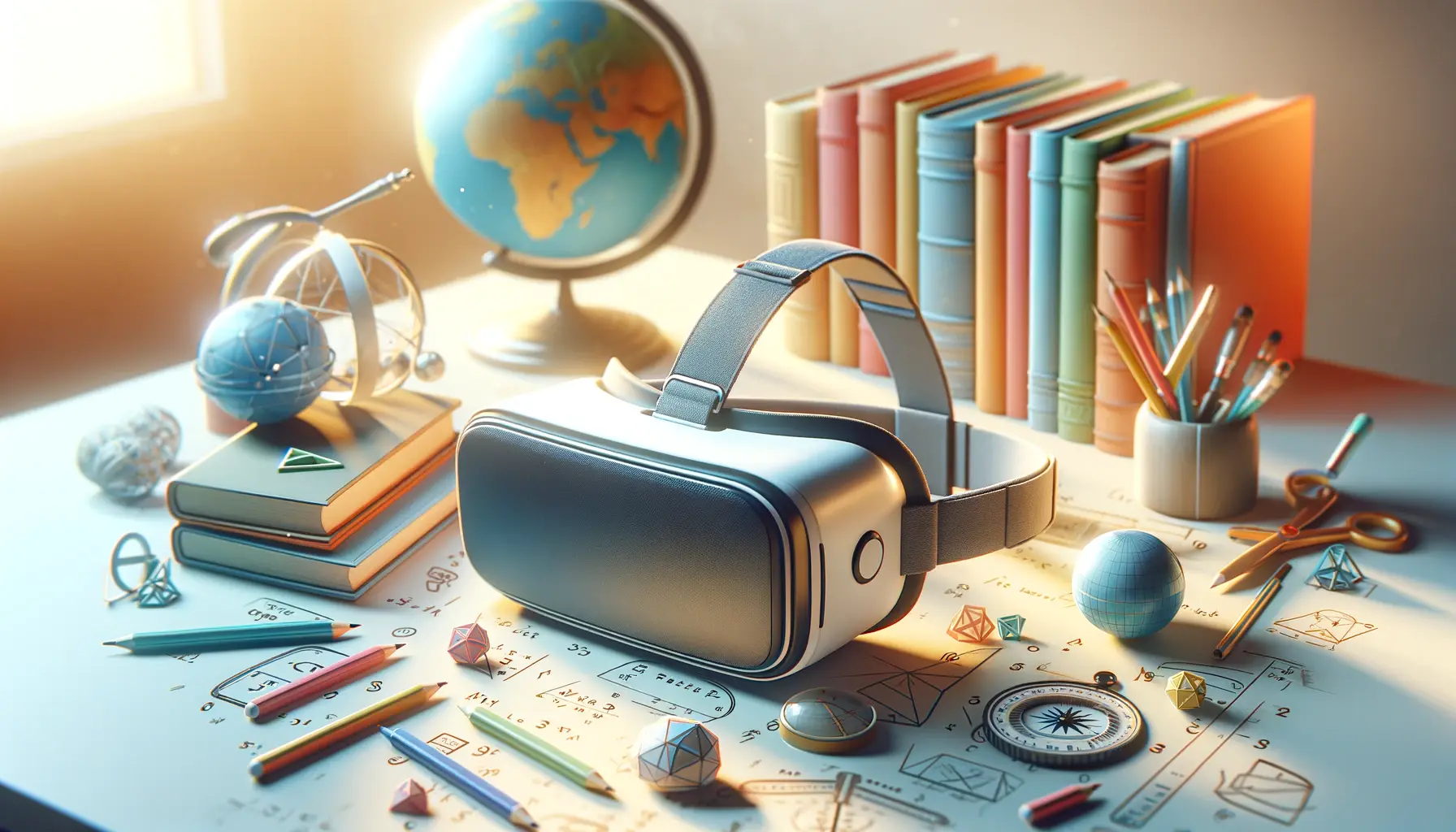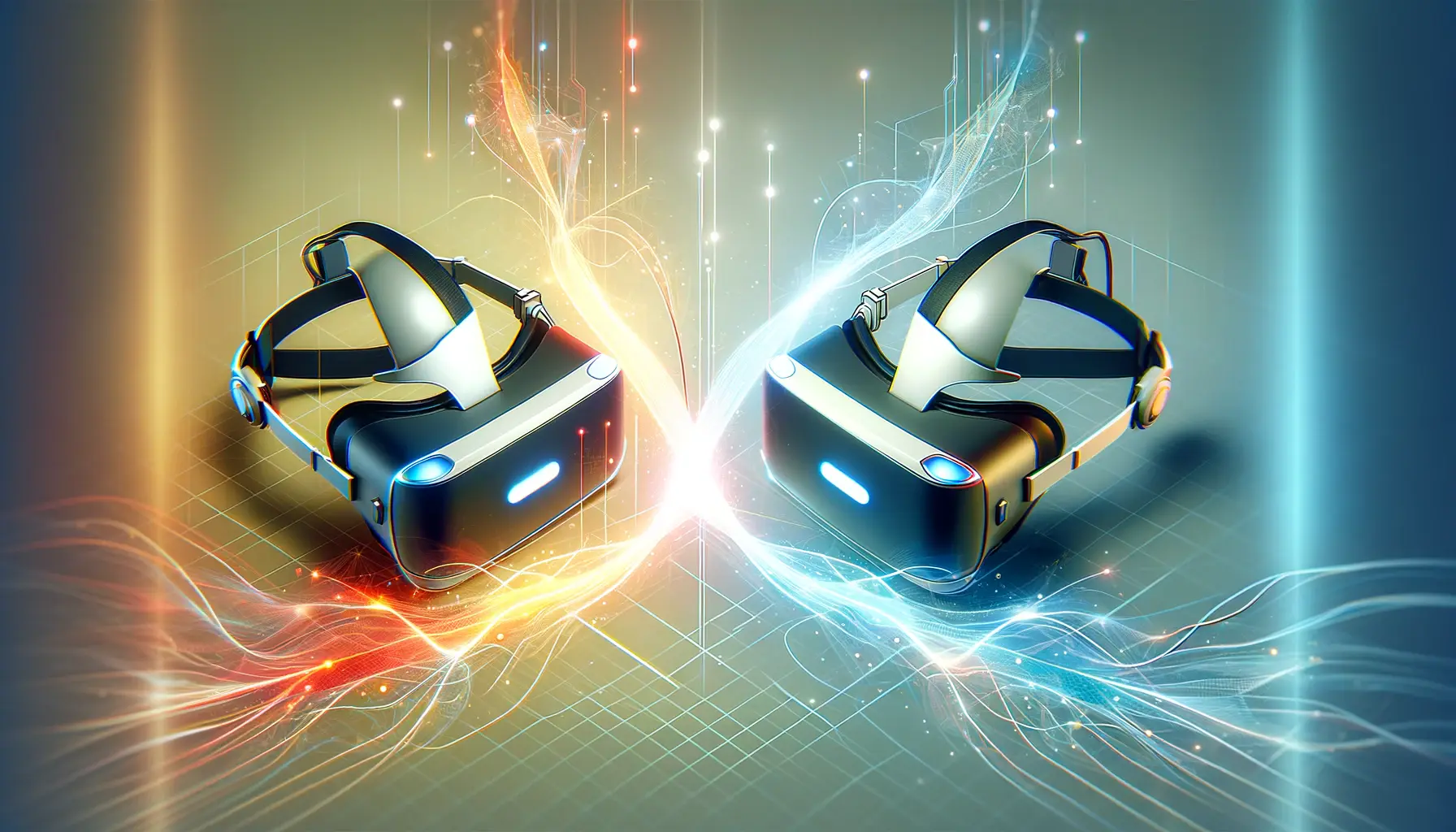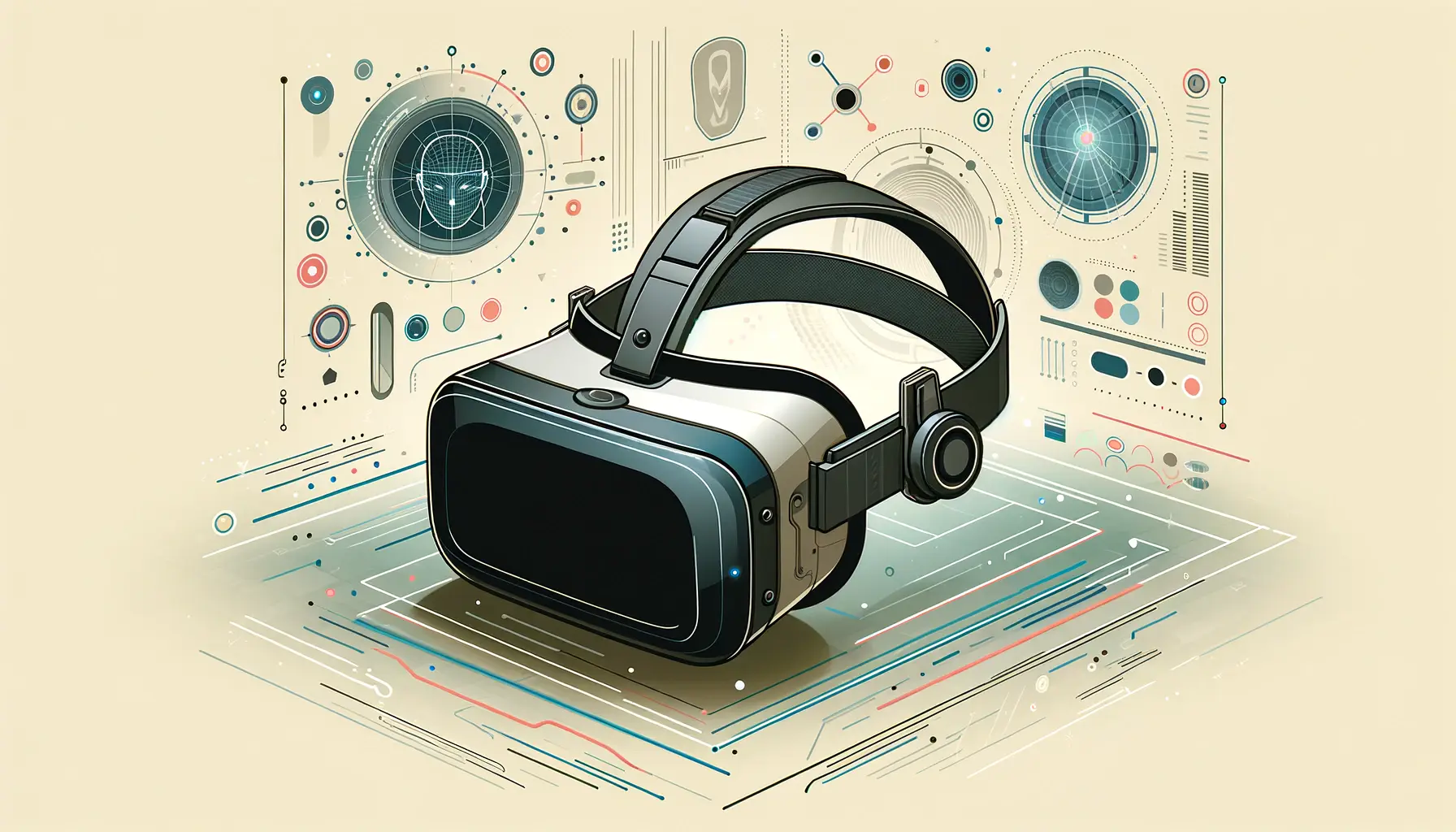The advent of virtual reality (VR) technology has opened up new frontiers for artists and creatives, offering them an unprecedented canvas to explore, create, and share their visions.
The Meta Quest 3, the latest iteration in the line of VR headsets from Meta, stands at the forefront of this revolution, promising to transform how artists engage with digital spaces.
This device not only enhances the immersive experience of VR but also introduces tools and features specifically designed for artists, making it a pivotal moment for the intersection of technology and art.
With its advanced capabilities, the Meta Quest 3 is not just a gaming console but a portal to vast creative possibilities.
Artists can now dive into a world where the limitations of physical space and materials no longer bind them.
This article delves into how the Meta Quest 3 serves as a dynamic platform for artists, exploring the various dimensions of VR art, from painting and sculpting in virtual environments to creating immersive installations that can be shared globally.
- Introduction to VR Art on Meta Quest 3
- The Evolution of VR Art with Meta Quest 3
- Creating Immersive Art Experiences
- Art Education and Workshops in VR
- Challenges and Solutions in VR Art Creation
- Future Trends in VR Art with Meta Quest 3
- Integrating VR Art into Mainstream Culture
- Embracing the Future of Art with Meta Quest 3
- FAQs: Exploring VR Art with Meta Quest 3
Introduction to VR Art on Meta Quest 3
The Meta Quest 3 offers a suite of features that cater specifically to artists looking to explore the realm of VR art.
With its enhanced processing power, improved graphics, and intuitive control system, the device provides a seamless and responsive environment for creative expression.
Artists can utilize VR art applications that allow for the creation of three-dimensional artworks, offering a level of depth and interactivity that traditional mediums cannot match.
One of the key advantages of creating art in VR is the ability to work in a fully immersive space.
This means artists are not just creating on a canvas but within a canvas, where every direction offers potential for exploration and creation.
The Meta Quest 3 amplifies this experience with its high-resolution display and precise tracking, ensuring that every stroke and movement is captured with accuracy, thus bridging the gap between the artist’s vision and their virtual creation.
Exploring the Tools and Applications
Several applications available on the Meta Quest 3 are revolutionizing the way artists create.
These apps offer a variety of virtual brushes, palettes, and sculpting tools, enabling artists to experiment with textures and forms in ways that were previously unimaginable.
From digital painting and sculpting to animation and design, the possibilities are endless, allowing artists to push the boundaries of their creativity.
Moreover, these applications are designed to be accessible to artists at all levels of expertise.
Whether you are a seasoned digital artist or someone just beginning to explore the potential of VR art, the Meta Quest 3 provides an intuitive platform for learning and growth.
The device’s immersive environment also serves as a unique space for artists to experiment with spatial relationships and perspective, offering new insights into the composition and the visual storytelling.
The Meta Quest 3 marks a significant milestone in the evolution of art, providing artists with an unparalleled medium to explore and create. Its impact on the art world is only beginning to be understood, but its potential to transform creative expression is immense.
The Evolution of VR Art with Meta Quest 3
The evolution of VR art through platforms like the Meta Quest 3 represents a significant shift in the artistic landscape.
This technology has not only expanded the toolkit available to artists but has also redefined the concept of space and presence in art.
The immersive nature of VR art challenges traditional art forms by introducing a dynamic, interactive element that engages the audience in novel ways.
As we delve deeper into the impact of the Meta Quest 3 on VR art, it becomes clear that this technology is not just a new medium for artistic expression but a catalyst for reimagining the possibilities of art itself.
The following points highlight the transformative role of the Meta Quest 3 in the evolution of VR art:
- Breaking Physical Boundaries: VR art transcends the physical limitations of traditional art forms, allowing artists to create expansive, immersive worlds that can be explored by the audience. The Meta Quest 3’s advanced VR technology enables artists to construct detailed, interactive environments that were previously confined to the imagination.
- Enhancing Interactivity: The interactive capabilities of the Meta Quest 3 offer a new dimension to art, where viewers can engage with artworks in a direct, tactile manner. This interactivity enriches the viewer’s experience, making art more accessible and engaging for a broader audience.
- Facilitating Collaborative Art: VR technology fosters collaboration among artists, regardless of their physical location. The Meta Quest 3 supports multiplayer modes in art applications, enabling artists to co-create in real-time within the same virtual space, thus democratizing the creative process.
- Expanding Creative Possibilities: The array of tools and features available on the Meta Quest 3 empowers artists to experiment with new techniques and forms. From virtual sculpting and painting to digital installations, artists can explore a wide range of creative avenues that were previously unattainable.
Case Studies: Artists Leveraging Meta Quest 3
Several pioneering artists have embraced the Meta Quest 3 to push the boundaries of VR art.
These case studies exemplify the innovative ways in which artists are utilizing the platform to create immersive, interactive artworks that challenge our perceptions of reality and art.
- Virtual Sculptures: Artists are using the Meta Quest 3 to sculpt intricate, three-dimensional artworks that can be viewed from any angle, providing a unique, immersive experience that goes beyond the static nature of traditional sculpture.
- Interactive Installations: By creating virtual installations, artists are inviting viewers to step into their creations, interact with elements of the artwork, and even alter the art piece itself, thereby blurring the lines between creator and audience.
- Animated VR Paintings: Leveraging the dynamic environment of the Meta Quest 3, artists are developing animated paintings that evolve over time or in response to viewer interactions, adding a temporal dimension to their art.
The Meta Quest 3 is not just transforming how art is made but also how it is experienced. By offering a platform for immersive, interactive, and collaborative art, it is setting the stage for a new era in the art world.
Creating Immersive Art Experiences
The Meta Quest 3 has ushered in a new era of immersive art experiences, enabling artists to create environments that engage the senses in unprecedented ways.
This immersion goes beyond visual stimulation, incorporating elements of sound, touch, and even movement, to create a fully enveloping experience.
The power of VR art lies in its ability to transport viewers to entirely new worlds, crafted from the artist’s imagination.
Immersive art experiences challenge the traditional viewer-artist dynamic, inviting participants to become part of the artwork itself.
This level of engagement encourages a deeper connection with the art, fostering a personal journey that is unique to each viewer.
The following aspects highlight how the Meta Quest 3 facilitates the creation of these immersive experiences:
- Environmental Storytelling: Artists can craft detailed narratives within their VR environments, guiding viewers through a story that unfolds as they explore. This storytelling technique leverages the spatial and interactive features of the Meta Quest 3, creating a narrative depth that traditional art forms cannot achieve.
- Sensory Integration: By integrating various sensory inputs, VR art can evoke emotional and physical responses that enhance the viewer’s immersion. The Meta Quest 3’s technology supports the incorporation of soundscapes, haptic feedback, and even olfactory elements to create a multisensory experience.
- Interactive Elements: Interactivity is a cornerstone of immersive VR art, allowing viewers to manipulate or influence the artwork in real-time. This can range from changing the artwork’s visual aspects to altering the narrative path, providing a level of engagement that is both empowering and transformative.
Expanding the Scope of Art Exhibitions
The advent of VR technology, particularly through platforms like the Meta Quest 3, has significantly expanded the scope of art exhibitions.
Virtual galleries and exhibitions are becoming increasingly popular, offering artists and curators new ways to showcase their work to a global audience without the constraints of physical space.
Virtual exhibitions on the Meta Quest 3 can replicate the experience of visiting a physical gallery, complete with detailed replicas of artworks that viewers can explore at their own pace.
Additionally, these virtual spaces can be designed to enhance the artwork, adding interactive or immersive elements that are not possible in a traditional gallery setting.
The benefits of virtual art exhibitions include:
- Global Accessibility: Virtual exhibitions can be accessed by anyone with a Meta Quest 3 headset, removing geographical barriers and making art accessible to a wider audience.
- Curatorial Innovation: Curators have the freedom to design unique, immersive spaces that challenge conventional exhibition layouts, offering new perspectives on the artwork displayed.
- Environmental Sustainability: By reducing the need for physical transportation and materials, virtual exhibitions offer a more sustainable alternative to traditional art shows.
The Meta Quest 3 is redefining the art exhibition landscape, providing a platform for innovative displays that extend beyond the walls of galleries and museums, making art more accessible and engaging for people around the world.
Art Education and Workshops in VR
The Meta Quest 3 is revolutionizing art education by offering immersive, interactive workshops that transcend traditional learning environments.
These virtual reality workshops provide a unique opportunity for learners to engage with art in a hands-on manner, facilitating a deeper understanding and appreciation of artistic techniques and concepts.
The immersive nature of VR art education on the Meta Quest 3 allows students to experience art from new perspectives, fostering creativity and innovation.
VR art workshops on the Meta Quest 3 cover a wide range of topics, from basic drawing and painting techniques to advanced digital sculpting and animation.
These sessions are not confined by the physical limitations of a classroom or studio, enabling students to explore and create within vast virtual spaces.
Key advantages of VR art education include:
- Enhanced Learning Engagement: The immersive VR environment captivates students’ attention, making the learning process more engaging and enjoyable.
- Accessibility: Students from anywhere in the world can participate in workshops, breaking down geographical barriers to high-quality art education.
- Instant Feedback: VR technology allows for real-time feedback from instructors, enabling students to improve their skills more effectively.
Collaborative Art Projects in VR
One of the most exciting aspects of VR art on the Meta Quest 3 is the ability to collaborate on art projects in a virtual space.
Artists and students can work together in real-time, regardless of their physical location, fostering a sense of community and shared purpose.
These collaborative projects can range from collective murals and sculptures to complex, multi-user installations, showcasing the collective creativity of participants.
The collaborative nature of VR art projects on the Meta Quest 3 not only enhances the creative process but also teaches valuable skills in teamwork and communication.
Participants learn to negotiate artistic visions, share techniques, and critique constructively, all within a supportive virtual environment.
The benefits of collaborative VR art projects include:
- Expanding Creative Horizons: Working with artists from diverse backgrounds and skill levels can inspire new ideas and approaches to art.
- Building a Global Art Community: VR collaborations connect artists worldwide, creating a global network of creatives who share a passion for VR art.
- Democratizing Art Creation: By providing a platform where anyone can contribute, VR art projects on the Meta Quest 3 make the art creation process more inclusive.
The Meta Quest 3’s impact on art education and collaborative projects is profound, offering an innovative platform that enhances learning, fosters creativity, and builds community among artists and students alike.
Challenges and Solutions in VR Art Creation
While the Meta Quest 3 offers groundbreaking opportunities for artists to explore and create within virtual reality, it also presents unique challenges.
These challenges range from technical limitations to the need for new skill sets.
However, with every challenge comes a solution, and the VR community, along with Meta, is continuously working to overcome these hurdles and push the boundaries of what’s possible in VR art.
Understanding these challenges and the innovative solutions being developed is crucial for artists who wish to fully embrace the potential of VR art creation on the Meta Quest 3.
Below are some of the common challenges faced by VR artists, along with strategies to address them:
- Technical Limitations: Despite its advanced capabilities, the Meta Quest 3 has limitations, such as battery life and processing power, which can impact complex art projects. Solution: Artists are learning to optimize their creations for efficiency, and Meta continuously releases updates to improve the hardware’s performance.
- Learning Curve: Transitioning from traditional art forms to VR can be daunting for artists unfamiliar with digital tools. Solution: A growing number of online tutorials, workshops, and community forums are available to help artists acclimate to the VR environment.
- Physical Discomfort: Prolonged use of VR headsets can cause discomfort for some users. Solution: Designing ergonomic VR spaces and encouraging regular breaks can help mitigate these issues.
Preserving Artistic Integrity in Digital Spaces
As art moves into the digital realm of VR, questions arise about preserving the artist’s original intent and the authenticity of digital artworks.
The Meta Quest 3 provides tools that ensure artworks remain true to the artist’s vision, but the issue of replication and distribution in digital formats presents challenges to traditional notions of art ownership and copyright.
Solutions to these challenges involve the use of digital certificates of authenticity, blockchain technology for art provenance, and innovative licensing agreements.
These measures not only protect the rights of artists but also ensure that collectors can confidently invest in VR art.
The VR art community and platforms like Meta Quest 3 are at the forefront of defining best practices for digital art conservation and ownership, ensuring that:
- Artists retain control over how their work is shared and used.
- Collectors have assurance regarding the authenticity and uniqueness of their digital art acquisitions.
- The value of digital artworks is recognized and preserved in the art market.
Assuming that VR art cannot convey the same depth or emotion as traditional art is a misconception. The Meta Quest 3 enables artists to create deeply immersive and emotionally resonant experiences that challenge and expand our understanding of art.
Future Trends in VR Art with Meta Quest 3
The Meta Quest 3 is not only transforming the current landscape of art creation and consumption but also setting the stage for future trends in VR art.
As technology advances, we are likely to see even more innovative uses of VR in the art world, pushing the boundaries of creativity and interaction.
The potential for growth and evolution in this space is vast, with several key trends already beginning to emerge.
Exploring these trends provides insight into the future of VR art, highlighting the ongoing impact of the Meta Quest 3 on artists, viewers, and the art community at large.
Here are some of the most promising trends shaping the future of VR art:
- Increased Accessibility: As VR technology becomes more affordable and widespread, access to VR art creation and consumption will expand, democratizing the art world and enabling a broader range of voices to be heard.
- Integration with Other Technologies: The convergence of VR with other emerging technologies, such as artificial intelligence and blockchain, will open new avenues for creativity, collaboration, and art distribution.
- Immersive Art Exhibitions: Virtual reality art exhibitions will become more prevalent, offering immersive experiences that transcend physical gallery spaces and redefine how art is experienced by audiences worldwide.
Empowering Artists and Communities
The Meta Quest 3 is empowering artists and communities by providing a platform for expression that is unbounded by physical limitations.
This empowerment is fostering a new era of artistic collaboration and community-building, where artists from diverse backgrounds can share their perspectives and connect with audiences on a global scale.
The impact of the Meta Quest 3 on empowering artists and communities is evident in several ways:
- Global Collaboration: VR art projects on the Meta Quest 3 facilitate collaboration among artists around the world, breaking down geographical barriers and fostering a global art community.
- Social Impact: Artists are using VR to address social and environmental issues, creating impactful artworks that raise awareness and inspire action among viewers.
- Educational Opportunities: VR art on the Meta Quest 3 is being used as an educational tool, providing immersive learning experiences that enhance understanding and appreciation of art and culture.
The future of VR art with the Meta Quest 3 is bright, with the potential to revolutionize how we create, experience, and share art. As technology continues to evolve, the possibilities for innovation and expression in the art world are limitless.
Integrating VR Art into Mainstream Culture
The integration of VR art into mainstream culture is a trend that’s gaining momentum, propelled by advancements in technology like those seen in the Meta Quest 3.
As VR becomes more accessible to the general public, its potential as a medium for artistic expression and cultural commentary is increasingly recognized.
This shift towards embracing VR art in mainstream culture is not just about adopting new technology; it’s about redefining the boundaries of art and expanding the ways in which we engage with creative works.
VR art’s journey into the mainstream involves overcoming perceptions of virtual reality as solely a gaming or entertainment platform.
By showcasing the depth and breadth of experiences that VR art can offer, the Meta Quest 3 plays a crucial role in this cultural shift.
Here are some ways VR art is becoming a part of mainstream culture:
- Artistic Recognition: VR artworks are beginning to be featured in major art awards and exhibitions, receiving recognition alongside traditional art forms.
- Public Installations: VR art installations are appearing in public spaces, museums, and galleries, making VR art experiences accessible to a wider audience.
- Media Coverage: Increasing media coverage of VR art projects highlights the innovative work being done in the field, bringing it to the attention of the general public.
Championing VR Art in Educational Institutions
Educational institutions play a pivotal role in integrating VR art into mainstream culture by incorporating it into curricula and providing students with the tools and knowledge to explore this new medium.
Schools, colleges, and universities equipped with devices like the Meta Quest 3 are well-positioned to lead this charge, offering students hands-on experience with VR art creation and appreciation.
The benefits of championing VR art in educational settings include:
- Fostering Creativity: VR art encourages students to think creatively and explore new forms of expression, preparing them for a future where digital and virtual technologies play a significant role in the arts.
- Enhancing Art Education: By incorporating VR into art education, students gain a broader understanding of art’s possibilities, beyond traditional mediums and techniques.
- Preparing Future Artists: Exposure to VR art and technology equips students with the skills and vision needed to succeed in the evolving art world, ensuring that the next generation of artists is adept at leveraging digital platforms for creative expression.
As VR art continues to weave its way into the fabric of mainstream culture, the Meta Quest 3 stands as a testament to the transformative power of technology in the arts. By bridging the gap between the digital and the tangible, VR art challenges us to reconsider our perceptions of reality and invites us to explore new dimensions of creativity.
Embracing the Future of Art with Meta Quest 3
The journey through the realms of VR art with the Meta Quest 3 reveals a landscape brimming with potential, innovation, and transformative experiences.
As artists and audiences alike navigate this new digital frontier, the Meta Quest 3 stands as a beacon of creative possibility, offering tools and platforms that redefine the essence of artistic expression.
The integration of VR art into mainstream culture and education underscores a pivotal shift in how we perceive, interact with, and value art in the digital age.
The Artistic Renaissance Powered by VR
The Meta Quest 3 is not merely a device; it’s a catalyst for a new artistic renaissance.
This era of VR art is characterized by boundless creativity, where traditional barriers are dissolved, and new forms of expression are born.
The impact of this technology on the art world is profound, offering:
- A democratization of art creation and consumption, making it accessible to a wider audience.
- An expansion of the artistic medium, incorporating interactivity, immersion, and multisensory experiences.
- A new platform for cultural and social commentary, allowing artists to engage with global issues in impactful ways.
Nurturing the Next Generation of Artists
The role of the Meta Quest 3 in education is pivotal in nurturing the next generation of artists.
By integrating VR art into curricula, educational institutions are preparing students for a future where digital and virtual mediums are at the forefront of creative industries.
This preparation includes:
- Encouraging creative thinking and problem-solving through immersive art experiences.
- Providing hands-on experience with cutting-edge technology, equipping students with valuable digital literacy skills.
- Opening up new career paths in art, design, and technology, reflecting the evolving demands of the global job market.
In conclusion, the Meta Quest 3 for artists represents a monumental leap forward in the way we create, experience, and share art.
It challenges us to expand our horizons, to explore uncharted territories of creativity, and to embrace the endless possibilities that VR art presents.
As we look to the future, the Meta Quest 3 promises to continue shaping the landscape of art, pushing boundaries, and inspiring generations of artists to come.
In this new digital renaissance, the only limit is our imagination.
FAQs: Exploring VR Art with Meta Quest 3
Delve into the world of VR art creation and experience with the Meta Quest 3 through these frequently asked questions.
VR art is the creation of immersive, interactive artworks using virtual reality technology, allowing artists to explore new dimensions of creativity.
Yes, Meta Quest 3 offers advanced features and apps specifically designed for artists to create, share, and explore VR art in immersive environments.
Meta Quest 3 provides various VR art applications equipped with digital brushes, palettes, and sculpting tools for creating three-dimensional artworks.
Yes, the Meta Quest 3 features user-friendly applications that cater to both seasoned artists and beginners, making VR art creation accessible to all skill levels.
Meta Quest 3 supports multiplayer modes in art applications, enabling artists to collaborate on projects in real-time within the same virtual space.
VR art complements traditional art by introducing new forms of expression and interaction, expanding the boundaries of creativity and audience engagement.
Yes, there are virtual galleries and exhibitions available on Meta Quest 3, offering immersive experiences that transcend physical gallery spaces.
VR art is increasingly being incorporated into educational curricula, providing immersive learning experiences that enhance understanding and appreciation of art.
